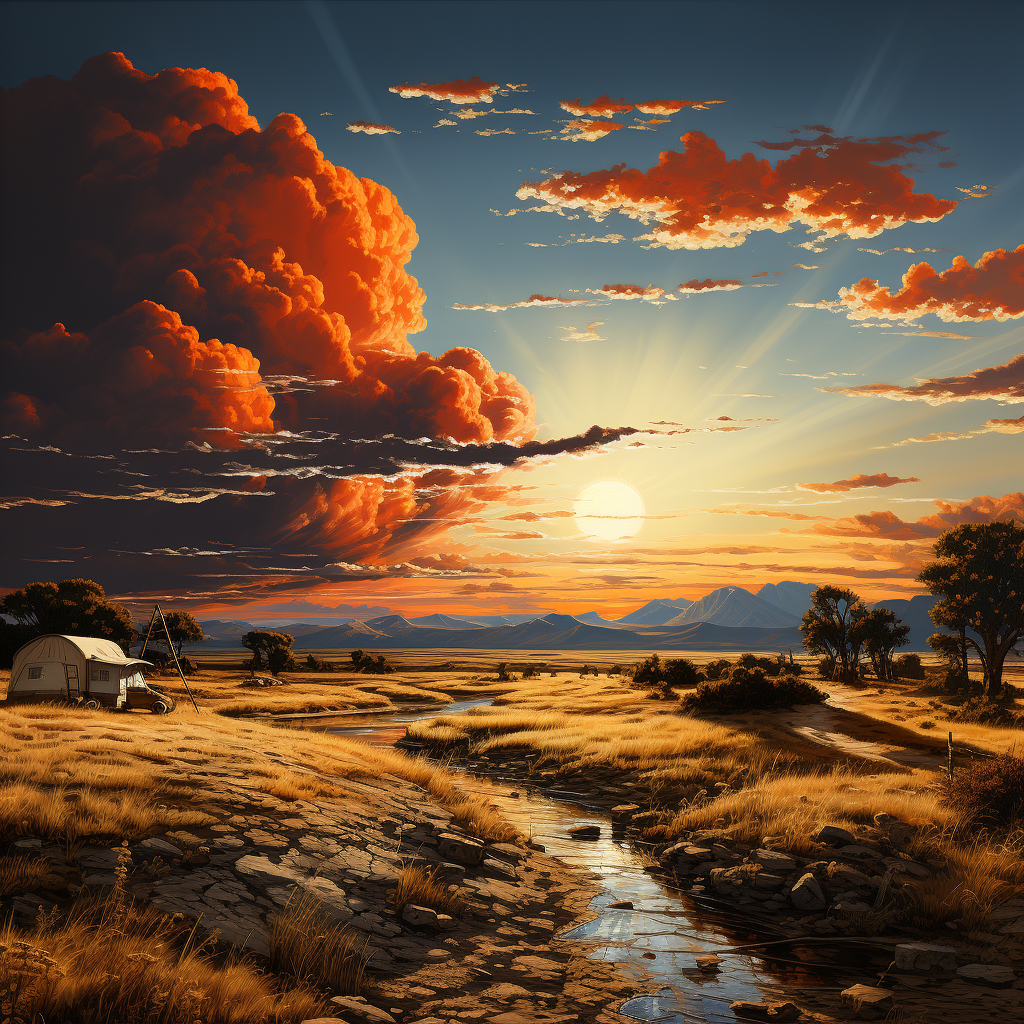ELI5 Summary
The low population density in Wyoming can be attributed to a complex mix of factors including its geographical layout, historical migration patterns, economic infrastructure, and unique culture. The state’s rugged topography and harsh climatic conditions deter high-density settlements. Historically, many viewed Wyoming as a transitional area during the westward migration, leading to a slower population growth. Economically, the wealth generated by its resource-rich land comes with a small workforce, which means fewer people are needed. Wyoming’s culture, shaped by its solitary environment, celebrates the quiet, self-reliant, and independent lifestyle, adding to the appeal of its solitude. In essence, Wyoming’s solitude is more of a unique trait than an anomaly, accentuating its charm and serenity.
Introduction to Wyoming’s Solitude
When we think of Wyoming, images of sweeping prairies, jagged mountain ranges, and vast open skies come to mind. All too often, it is these iconic landscapes that make Wyoming seem endlessly empty. But, is Wyoming really as desolate as it appears? It’s time to delve below the surface and discover the captivating reasons behind Wyoming’s solitude.
Initial Perception vs Reality
A casual observer might perceive Wyoming as an empty, unpeopled expanse, akin to a forgotten frontier. Yet, this misconception often stems from urbanized perspectives that overlook the state’s richness in its purest form. While Wyoming may lack in population density, it thrives in preserving raw, untouched landscapes and a unique way of life that can’t be found elsewhere.
Why It’s Important to Understand
Wyoming’s solitude offers an exceptional backdrop for studying how space—physical, social, psychological—is perceived and inhabited. The implications of the topic “why is Wyoming so empty?” extend beyond geographical or statistical facts. By exploring what emptiness in Wyoming means, we can better understand the cultural, environmental, and economic factors that shape this fascinating state.
The Geographical Layout of Wyoming
Examining the geography of Wyoming helps dissect why it appears so deserted. From its topography to climatic conditions, various factors contribute to Wyoming’s sparse population.
Topographical Factors
Wyoming is a paradise of uneven topography. It is home to the Rocky Mountains and the Great Plains, resulting in a mixture of mountains, valleys, and wide-open grasslands, this diversity results in areas that are naturally unsuitable or difficult for human habitats due to its ruggedness and remoteness.
Impacts of Weather Conditions
Weather conditions are another crucial factor contributing to Wyoming’s solitude. The state has a semi-arid continental climate, which means it experiences cold winters with substantial snowfall and warm, relatively dry summers. The harsh winters potentially discourage many from settling here permanently or instigates a seasonal population fluctuation.
Historical Overview of Wyoming’s Population
The story of Wyoming’s lower population isn’t a recent phenomenon. A brief walk down history lane takes us to the very foundation of the state’s unique population dynamics.
Migration Patterns Over Time
Wyoming was the last of the contiguous states to gain statehood in 1890. Its historical low population can be traced back to the transcontinental migration during the 19th century when most settlers viewed it as a transition area, a vast tract to be crossed on the way to more fertile lands on the west coast.
Key Historical Events Affecting Wyoming’s Population
From the days of fur trappers and traders to the Homestead Act of 1862, and even through the mineral and coal boom in the late 20th century, the in-migration was often offset by out-migration, maintaining its historically low population density. Major historical events have shaped the population curve of Wyoming, resulting in its current ‘so-called’ emptiness.
Economic Analysis
Understanding Wyoming’s economic infrastructure plays an integral role in deciphering its sparse populace. Let’s delve into an economic perspective on ‘why is Wyoming so empty?’
The Resource-Rich Land
Wyoming is abundantly endowed with mineral resources like coal, natural gas, and oil. This abundance has shaped the state’s economy to lean heavily towards extractive industries. Substantial wealth is generated with a small workforce, reducing the need for a populous state.
Impact of Economic Opportunities on Population
Due to its economic make-up, Wyoming’s job market is not diversified enough to lure a broad spectrum of job seekers. Additionally, the boom and bust nature of the extractive industry can result in fluctuating economic stability, influencing population influx and outflux. Essentially, Wyoming’s unique economic landscape perpetuates the state’s solitude.
The Appeal of Wyoming’s Solitude
If you’re wondering “why is Wyoming so empty?“, perhaps a better query would be “why is Wyoming’s emptiness appealing?“. The state’s solitude isn’t merely a fact to acknowledge; it’s also a charm to appreciate.
Natural Beauty and Open Spaces
Wyoming’s solitude allows its stunning natural beauty to shine with unparalleled clarity. From the Rocky Mountain wilderness to the stark beauty of the high plains, Wyoming’s landscapes are a feast for the senses. The unspoilt expanses offer tranquility that is hard to find in the more densely populated areas.
The Unique Culture of Wyoming
Meanwhile, Wyoming’s solitary tag has shaped a distinctive cowboy culture. The shared ethos of independence, resilience, and a deep respect for the land underpins the everyday life of Wyoming residents. The sparse population paradoxically accentuates this intense communal experience, distinguishing Wyoming from its more populous counterparts.
Conclusion: Demystifying the Charm of Wyoming’s Solitude
We have unpacked several intriguing reasons behind the often-posed question, “Why is Wyoming so empty?“. Their seemingly barren vistas are an intertwining narrative of geographical conditions, climatic factors, historical imprints, economic influences, and a preserved culture that revels in its solitude.
Wyoming’s emptiness is much more than an absence of people—it’s a testament to a land and a people that have harmoniously adapted to a unique, often harsh, and breathtakingly beautiful environment. It reveals a culture of hardy residents who embrace solitude as a way of life, preserving a corner of the world where nature rules, skies stretch wide, and humans are but humble guests. Therefore, answering “Why is Wyoming so empty?” becomes an exploration of understanding and appreciating Wyoming’s simplistic charm and serene solitude. And that, in itself, is densely fascinating.




